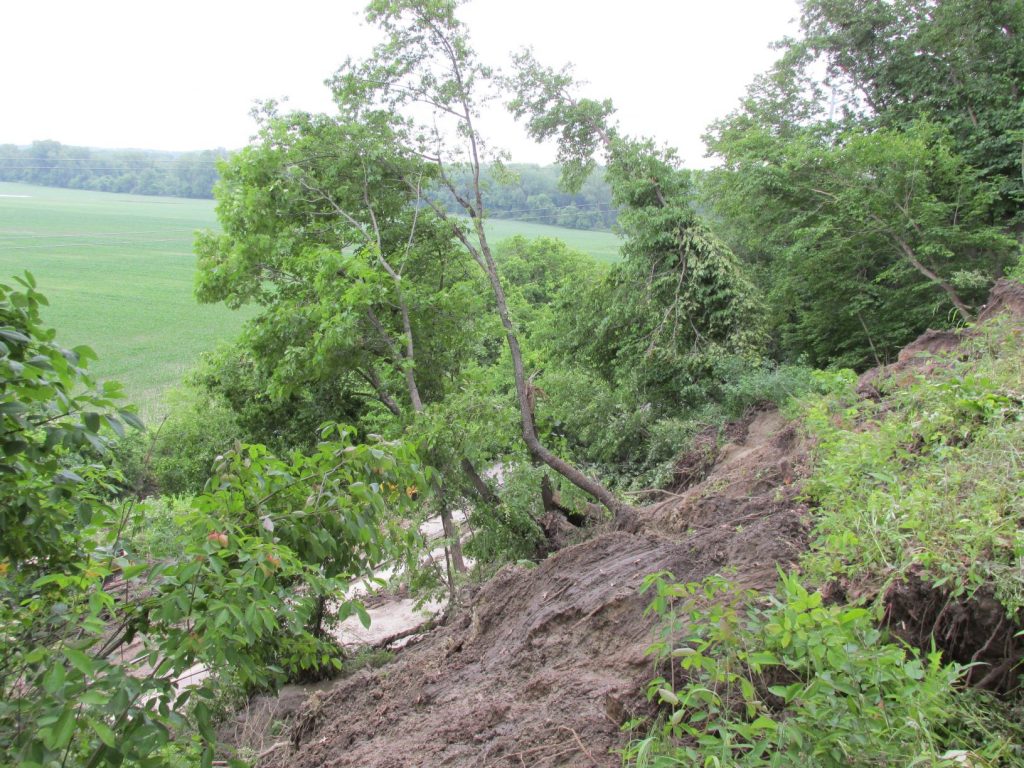PHMSA Advisory Bulletin 2019-0087: Potential for Damage to Pipeline Facilities Caused by Earth Movement and Other Geological Hazards
Sep 22, 2020
The U.S. Department of Transportation Pipeline and Hazardous Materials Safety Administration (PHMSA) issued Advisory Bulletin 2019-0087 in April of 2019. The advisory bulletin was issued to remind owners and operators of gas and hazardous liquid pipelines that earth movement, particularly in variable, steep, and rugged terrain and with varied geological subsurface conditions, can pose a threat to the integrity of a pipeline if those threats are not mitigated.

Pipeline companies have been in the process of updating and modifying integrity programs to identify, monitor, manage and mitigate potential ground movement and hydrotechnical hazards. Blackstone has assisted companies with updating training programs to help field personnel identify and monitor potential ground movement and hydrotechnical hazards as part of routine patrolling activities.
The bulletin advised owners and operators of pipelines to consider taking the following actions to ensure pipeline safety:
1. Identify areas surrounding the pipeline that may be prone to large earth movement, including but not limited to slope instability, subsidence, frost heave, soil settlement, erosion, earthquakes, and other dynamic geologic conditions that may pose a safety risk.
2. Utilize geotechnical engineers during the design, construction, and ongoing operations of a pipeline system to ensure that sufficient information is available to avoid or minimize the impact of earth movement on the integrity of the pipeline system.
3. Develop design, construction, and monitoring plans and procedures for each identified location, based on the site-specific hazards identified. When constructing new pipelines, develop and implement procedures for pipe and girth weld designs to increase their effectiveness for taking loads, either stresses or strains, exerted from pipe movement in areas where geological subsurface conditions and movement are a hazard to the pipeline integrity.
4. Monitoring plans may include:
- Ensuring during construction of new pipelines that excavators do not steepen, load (including changing the groundwater levels) or undercut slopes which may cause excessive ground movement during construction or after operations commence;
- Conducting periodic visits and site inspections; increased patrolling may be necessary due to potential hazards identified and existing/pending weather conditions. Right-of-way patrol staff must be trained on how to detect and report to appropriate staff the conditions that may lead to or exhibit ground movement;
- Identifying geodetic monitoring points (i.e. survey benchmarks) to track potential ground movement;
- Installing slope inclinometers to track ground movement at depth which may otherwise not be detectable during ROW patrols;
- Installing standpipe piezometers to track changes in groundwater conditions that may affect slope stability;
- Evaluating the accumulation of strain in the pipeline by installing strain gauges on the pipeline;
- Conducting stress/strain analysis utilizing in-line inspection tools equipped with Inertia Mapping Unit technology and High Resolution Deformation in-line inspection for pipe bending and denting from movement; and
- Utilizing aerial mapping light detection and ranging or other technology to track changes in ground conditions.
5. Develop mitigation measures to remediate the identified locations.
6. Mitigation measures should be based on site-specific conditions.
Section 195.401(b)(1) of the pipeline safety regulation for hazardous liquid pipelines states that “whenever an operator discovers any condition that could adversely affect the safe operation of its pipeline system, it must correct the condition within a reasonable time. However, if the condition is of such a nature that it presents an immediate hazard to persons or property, the operation may not operate the affected part of the system until it has corrected the unsafe condition.”
Section 195.401(b)(2) further states that “when an operator discovers a condition on a pipeline covered under the integrity management requirements in Section 195.452, the operator must correct the condition as prescribed in Section 195.452(h).” Land movement, severe flooding, river scour, and river channel migration are the types of unusual operating conditions that can adversely affect the safe operation of a pipeline and require corrective action under Sections 192.613(a) and 195.401(b).
Additional guidance for identifying risk factors and mitigating natural force hazards on pipeline segments, that could affect high consequence areas, are outlined in Appendix C, section B, to Part 195. American Petroleum Institute (API) Recommended Practice 1133 (Managing Hydrotechnical Hazards for Pipelines Located Onshore or Within Coastal Zone Areas), Second Edition, December 2017 is also an excellent resource for managing hydrotechnical hazards for pipelines.
Contact Rowley Tedlock for more information on training program updates and Blackstone’s Pipeline Services.